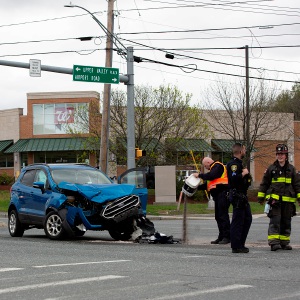‘They’re not go-karts’: NH snowmobile fatalities prompt safety warnings
| Published: 03-03-2024 2:38 PM |
The last two weeks in New Hampshire’s North Country have been marked by at least a dozen snowmobile accidents, two of which have been fatal. Officials say while overall the accident numbers aren’t anything out of the norm this year, the deaths are.
Two women — Shawnee Hollis, 39, and Krista Bebezas, 48 — died as a result of snowmobile crashes on Feb. 16 and Feb. 24, respectively. In late January, Stacey McGarry, 56, also died in a crash. Preliminary investigations suggest that operator inexperience played a role in the deaths of all three women, who were from Massachusetts.
Mark Ober, lieutenant for New Hampshire Fish and Game in Coos County, said three fatalities is “way above what we ever see” in a year. The last two weeks in particular have been busy, he noted, because of school vacations, a stretch of time that typically sees an uptick in incidents due to less experienced people coming from out of state to try out the sport.
“This really isn’t a toy,” Ober said. “It’s a dangerous thing you can get badly hurt or killed riding. There is no safety mechanism other than a helmet to protect someone when they get into a crash. You are open to the elements.”
A review of incidents over the last two weeks shows Fish and Game has attributed most to inexperience. Speed, inattention, and marginal trail conditions were also cited as factors in some of the accidents, two of which involved minors. The operators were mainly from Massachusetts, Connecticut, and New York.
Fish and Game officials have specifically noted when an accident involved unintentional use of the thumb throttle on the snowmobile’s handlebar, which can be likened to pressing a car’s gas pedal instead of the brakes.
“A common thread with some of these inexperienced (riders) is they grab the handlebar and the thumb is on the throttle, and once you do that it’s like going from zero to 50-60 instantly,” Ober said. “They lose control and usually it’s right into trees.”
Dan Gould, executive director of the New Hampshire Snowmobile Association, said in these instances, it can take just seconds “before total loss of control takes place.” Snowmobiles, he noted, weigh around 600 pounds and typically have in excess of 100 horsepower.
Article continues after...
Yesterday's Most Read Articles
“They’re not go-karts at an amusement park,” he said. “They are very serious, capable machines.”
In New Hampshire, all snowmobile operators 12 and older must have either an OHRV/snowmobile safety education certificate or a valid driver’s license, and all snowmobiles must be registered with the state if operated off the owner’s property.
With these requirements, Gould said New Hampshire is typically a “fairly safe state” when it comes to snowmobiling. But operators, especially novice ones, should approach each ride with caution, as trail conditions change daily and inattention can be risky.
“If the snow is soft midday, all of a sudden the snowmobile slides through corners almost like when you’re operating a car in the winter,” Gould said. “You don’t always know which corner is going to be more slippery than another. You’re on a trail, not on an engineered highway or road. There are unforeseen dips, bumps, maybe a rock sticking out.”
His advice to every new snowmobiler is to get familiar with the controls before going out. When it’s time for the first ride, do it with someone experienced in a controlled area. Once on the trail, take it slow and make stops along the way.
“Ultimately the best situation would be for an individual to get a snowmobile safety (class),” Gould said. “But there’s so much available online, anyone at the very least should watch some safety videos.”
In addition to a helmet, Gould recommends all riders wear a “TekVest,” what he called a helmet for the torso, similar to what motocross racers wear.
“Everyone in my family wears them, most of my friends wear them,” he said, “because oftentimes a serious injury is to the torso. I really strongly recommend that people consider wearing them.”
Fish and Game publishes press releases about every snowmobile accident or fatality. That’s part of the state’s education efforts, Ober said, to “put it out there, especially for people who have never ridden before.”
Responding to these incidents is no easy feat and often includes Fish and Game conservation officers, EMS personnel, and fire departments. Most occur a long way out from roads, likely deep in the woods and inaccessible by vehicles. Ober described the typical process for law enforcement: They load their own snowmobile onto a trailer, transport it to a location near the accident, offload it, and then ride to the scene to conduct the investigation.
“It’s a huge process,” he said. “It’s not like a crash that happens on the road.”
And in a place like the North Country, response times can be long. Ober recalled years ago responding to a crash in Pittsburg from his home in Franconia — more than an hour-and-a-half drive.
“There’s few of us, and areas are large.”

 Plan on track to ship Upper Valley mail to Connecticut for sorting
Plan on track to ship Upper Valley mail to Connecticut for sorting West Lebanon crash
West Lebanon crash Over Easy: On bread, buttered popcorn and big sandwiches
Over Easy: On bread, buttered popcorn and big sandwiches
